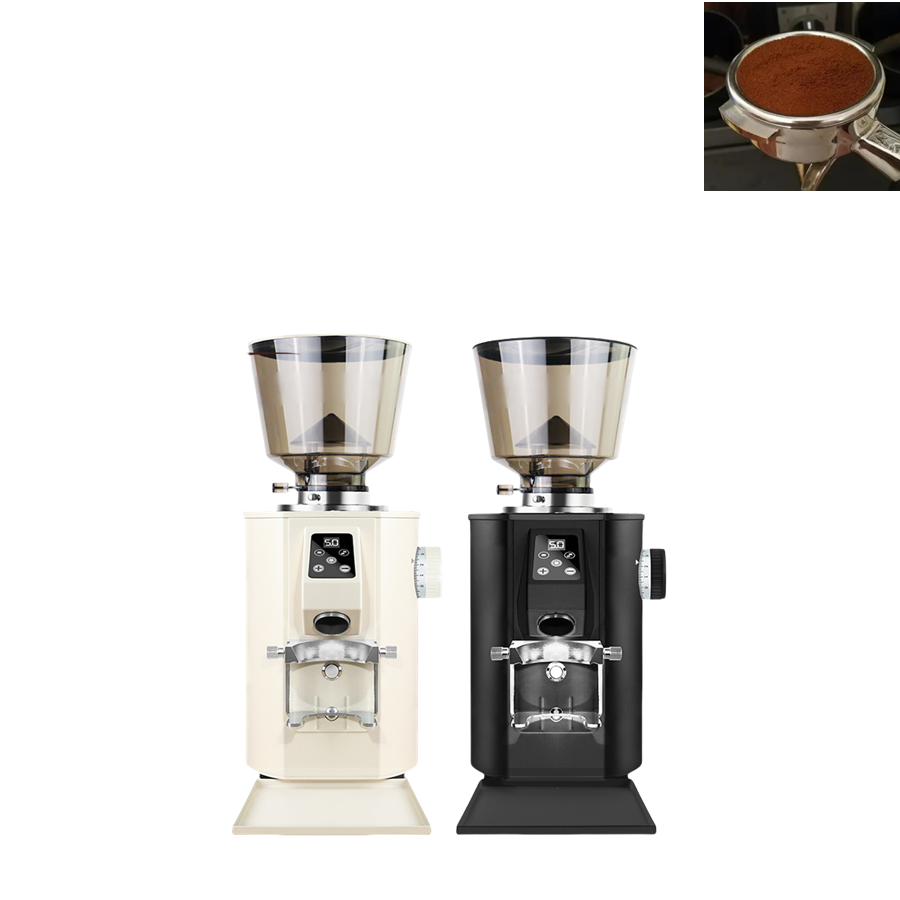The correct setting of the grinding degree of the coffee grinder is the key to ensuring the taste and extraction effect of the coffee. Here are some specific steps and considerations for setting the grinding degree:
First, understand the impact of grinding degree on coffee
Grinding degree refers to the particle size of the coffee bean after being ground. The finer the degree of grinding, the larger the contact area between coffee powder and water, the faster the extraction speed, and the richer the taste of coffee. On the contrary, the coarser the grinding degree, the slower the extraction speed, and the taste of coffee will be relatively light. Therefore, according to the type of coffee and personal taste preferences, choosing the right degree of grinding is crucial.
The second step is to set the grinding degree
Refer to the instructions:
Different grinding machines have different adjustment methods and scale marks. When using for the first time, you should read the instructions carefully to understand the adjustment method and scale range of the grinder.
Determine the initial grinding degree:
If the manual has a recommended initial grinding degree, you can try it from this scale. If not, you can choose a rough initial grinding degree based on the type of coffee and extraction method. For example, espresso usually requires a finer grind, while hand-brewed coffee is suitable for a coarser grind.
Perform extraction tests:
The extraction test of coffee is performed using the determined initial grinding degree. Observe the extraction speed, color and taste to determine whether the grinding degree is appropriate.
Fine grinding degree:
If the extraction speed is too fast, the coffee taste is weak, indicating that the grinding degree may be too coarse, and it is necessary to adjust the grinding degree appropriately.
If the extraction speed is too slow and the coffee tastes bitter, it indicates that the grinding degree may be too fine, and the coarse grinding degree needs to be adjusted appropriately.
For each adjustment, it is recommended to fine-tune only one scale to avoid large adjustments that can not accurately find the ideal grinding degree.
Repeated testing and adjustment:
After fine tuning, the extraction test was carried out again to observe the change of extraction effect. Based on the test results, continue to fine-tune the grinding until you find the most suitable grinding degree.
Third, precautions
Keep the grinder clean:
Before and after each use, the residual coffee powder in the grinder should be cleaned to avoid the old powder affecting the grinding effect of the new powder.
Avoid prolonged continuous grinding:
Continuous grinding for a long time will cause the grinding machine to overheat, affecting the equipment life and grinding effect. Therefore, it is recommended that each grinding time should not be too long, and the next grinding should be carried out after a proper rest.
Record the adjustment results:
During the adjustment of grinding degree, it is recommended to record the setting and extraction effect of each adjustment. This helps you better understand how grind affects your coffee and find the most suitable grind.
Consider the freshness and degree of roasting of the beans:
Fresh coffee beans and coffee beans with different degrees of roasting may require different degrees of grinding. Therefore, when adjusting the grinding degree, the influence of these factors on the extraction effect should also be considered.
Fourth. Example operation (Taking espresso as an example)
Determine the initial grinding degree:
Suppose your mill scale ranges from 1 to 10, where 1 is the thinnest and 10 is the thickest. For an espresso, start with a scale of 4 or 5.
Perform extraction tests:
Extraction tests were performed using 18 grams of ground coffee. Observe whether the extraction time is 30-40 grams in 20-30 seconds, as well as the taste and color of the coffee.
Fine grinding degree:
If the extraction time is too fast and the coffee tastes weak, the grinding degree can be adjusted to the scale 3 or 4.
If the extraction time is too slow and the coffee tastes bitter, the grinding degree can be adjusted to the scale 5 or 6.
Repeated testing and adjustment:
After fine tuning, the extraction test was carried out again to observe the change of extraction effect. Based on the test results, continue to fine-tune the grinding until you find the most suitable grinding degree.
Through the above steps and precautions, you can correctly set the grinding degree of the coffee grinder and make coffee that meets your personal taste.


